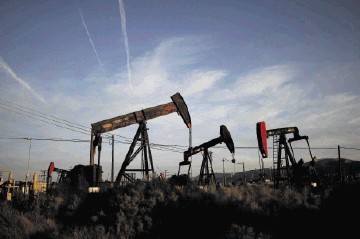
Even as millions of barrels of oil are pumped at a loss at current prices, only a fraction of the production has been shut, industry research group Wood Mackenzie said.
The apparent financial resilience of some producers could delay a recovery in the oil market that has seen an oversupply of 2 million barrels per day (bpd) push prices down by some 70% over the past 18 months.
“Curtailed budgets have slowed investment which will reduce future volumes, but there is little evidence of production shut-ins for economic reasons,” said Robert Plummer, Wood Mackenzie’s vice president of investment research.
Just 100,000 bpd out of the 96.1 million bpd of oil pumped worldwide have been closed so far since the price plunge, most of it in Canada’s oil sands, conventional U.S. projects and aging fields in Britain’s North Sea, according to the research.
The group’s analysis showed that 3.4 million bpd of oil pumped now, 3.5 percent of worldwide production, is “cash negative” at Brent prices of $35 per barrel. Brent was trading at $34.60 per barrel on Friday morning, meaning selling this oil currently costs more than it takes to get the barrels out of the ground.
But the hope of a rebound could keep even these from closing.
“Given the cost of restarting production, many producers will continue to take the loss in the hope of a rebound in prices,” Plummer said.
The bulk of the most expensive to produce oil is in Canada, where 2.2 million bpd is “cash negative” at current prices, most of it in oil sands and small conventional wells. An additional 230,000 bpd in is Venezuela’s heavy oil fields, and 220,000 bpd is in the United Kingdom.
Those operators, Wood Mackenzie said, were likely to store their oil to sell later, only shutting fields if mechanical or maintenance problems required investments they “can’t rationalize” at current prices.
In the United States the research found that aggressive cost cutting had enabled more of the shale plays to make money – and survive – at lower prices.
“In the past year we have seen a significant lowering of production costs in the U.S., which has resulted in only 190,000 bpd being cash negative at a Brent price of $35,” said Stewart Williams, vice president of upstream research at Wood Mackenzie, adding that “the majority” only become cash negative at Brent prices “well-below $30 per barrel.”
Wood Mackenzie currently forecasts Brent prices to average $41 per barrel in 2016.
